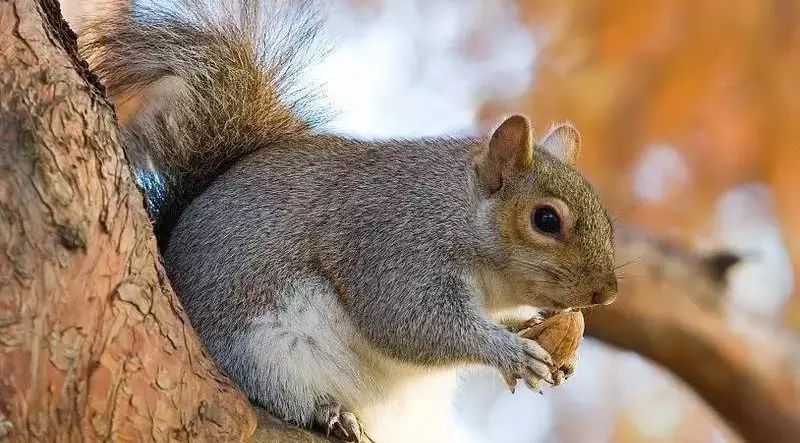
Grey squirrel, a master of digging holes.
most of the writers of online articles have to dig holes, and it is common to dig holes not to fill them, and what is more, almost every article is a pit. Come to think of it, this behavior is similar to that of gray squirrels, who also love digging holes.
in the course of evolution, some animals have evolved the behavior of storing food, of course, saving and stealing. For squirrels, stealing and being stolen are common because there are often many squirrels living in the same area at the same time. North American red squirrels, for example, steal an average of 25% of the pine cones they eat-and vice versa.
so the scientists focused on the creepy and cute gray squirrels. They go to great lengths to eat: the acorns they bury themselves will be eaten or stolen after only three days in the ground, and even the acorns buried by the researchers will not last for five days. To avoid being stolen by other squirrels, gray squirrels hide their food in different places and develop a strong spatial memory to remember where they hide it. They even play some careful tricks to deceive pineal thieves when hiding food. Scientists have found that gray squirrels have three behaviors when they get acorns. Sometimes they will find a fengshui place with acorns in their mouths, dig holes, throw acorns in, and bury them with filling. Sometimes they dig many holes and don't bury the acorns until they find a satisfactory one. In most cases, these holes without acorns will not be filled. But there are times when gray squirrels fill holes without acorns and continue to dig new ones with acorns in their mouths. See, the behavior pattern is exactly the same as that of the author of an online article.
scientists think that the act of "filling the hole with no fruit" is a hoax, so they designed two experiments to illustrate this point. The first experiment is to prove that this deception is really effective. Although it is ideal to observe other squirrels trying to dig these fake pits and being deceived, because the frequency of deception itself is not high, it is not possible to systematically observe enough data. So they had to find some undergraduates (what did the undergraduates do wrong? To observe how the squirrels bury the acorns and ask them to dig up the acorns when the squirrels are gone. The data show that digging fake holes can effectively reduce the number of acorns being dug out. It feels like a matter of course. The second experiment starts with reasons. If squirrels fill fake pits to prevent acorns from being stolen, then acorns should be filled more frequently after acorns are stolen. The experimental results show that when the first batch of buried pine cones are dug away by the experimenter, the behavior of filling fake holes is significantly increased when the second batch of pine cones are buried.
so I hope that there will be more sincerity and less routines between people. Don't learn bad things from squirrels. I'd rather not write than dig holes.
Autumn acorns
carry lovely lies
are all in the pit
cite: https://www.researchgate.net/publication/222822696_Cache_protection_strategies_of_a_scatter-hoarding_rodent_Do_tree_squirrels_engage_in_behavioural_deception
this article is reproduced from TodayILearned Comics, an official account full of interesting and cold knowledge! If you like, scan the code and follow the author ↓↓
cool science-window knocking rain PS: today I'm going to attend the 9th anniversary of the Scientific Squirrel Club!
I don't have time to write a new draft, so I want to show you the scientific basis for squirrels digging holes. )
cool science-window knocking rain PS: today I'm going to attend the 9th anniversary of the Scientific Squirrel Club!
I don't have time to write a new draft, so I want to show you the scientific basis for squirrels digging holes. )
Step into the ultra chic in our tulle wedding dress. Our trendy collections are surprisingly affordable.